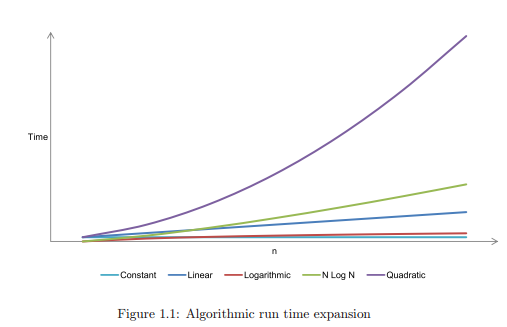

Tips for working through the examples
As with most books you get out what you put in and so we recommend that in
order to get the most out of this book you work through each algorithm with a
pen and paper to track things like variable names, recursive calls etc.
The best way to work through algorithms is to set up a table, and in that
table give each variable its own column and continuously update these columns.
This will help you keep track of and visualise the mutations that are occurring
throughout the algorithm. Often while working through algorithms in such
a way you can intuitively map relationships between data structures rather
than trying to work out a few values on paper and the rest in your head. We
suggest you put everything on paper irrespective of how trivial some variables
and calculations may be so that you always have a point of reference.
When dealing with recursive algorithm traces we recommend you do the
same as the above, but also have a table that records function calls and who
they return to. This approach is a far cleaner way than drawing out an elaborate
map of function calls with arrows to one another, which gets large quickly and
simply makes things more complex to follow. Track everything in a simple and
systematic way to make your time studying the implementations far easier.
The Outline
We have split two part of topic
Part 1: Provides discussion and pseudo-implementations of common and uncommon data structures; and
Part 2: Provides algorithms of varying purposes from sorting to string operations.
The reader doesn’t have to read the book sequentially from beginning to end: chapters can be read independently from one another. We suggest that in part 1 you read each chapter in its entirety, but in part 2 you can get away with just reading the section of a chapter that describes the algorithm you are
interested in.
Each of the chapters on data structures present initially the algorithms concerned with:
The Outline
We have split two part of topic
Part 1: Provides discussion and pseudo-implementations of common and uncom-
mon data structures; and
Part 2: Provides algorithms of varying purposes from sorting to string operations.
The reader doesn’t have to read the book sequentially from beginning to end: chapters can be read independently from one another. We suggest that in part 1 you read each chapter in its entirety, but in part 2 you can get away with just reading the section of a chapter that describes the algorithm you are
interested in.
Each of the chapters on data structures present initially the algorithms con-
cerned with:
Nggak Nyangka! Hidup Gue Berubah Total! Gue bukan siapa-siapa. Cuma anak kos biasa yang kerja serabutan buat nutup biaya hidup… Read More
What is the Main Cause of a Heart Attack? What is its Solution? A heart attack is the blockage of… Read More
In the vast economic arena, one term that often takes center stage, inciting extensive debates and discussions, is the "debt… Read More
De-Dollarization: The Changing Face of Global Finance The financial landscape is in a state of flux, with an intriguing economic… Read More
The curtains closed on a dramatic Bundesliga season with Bayern Munich standing tall once again, clinching their 11th straight title.… Read More
The Unfolding Story of Celine Dion's Health In recent news that has left fans across the globe stunned, iconic singer… Read More